Johannes Galinsky
Discrete-Fresnel Domain Channel Estimation in OCDM-based Radar Systems
Jul 21, 2022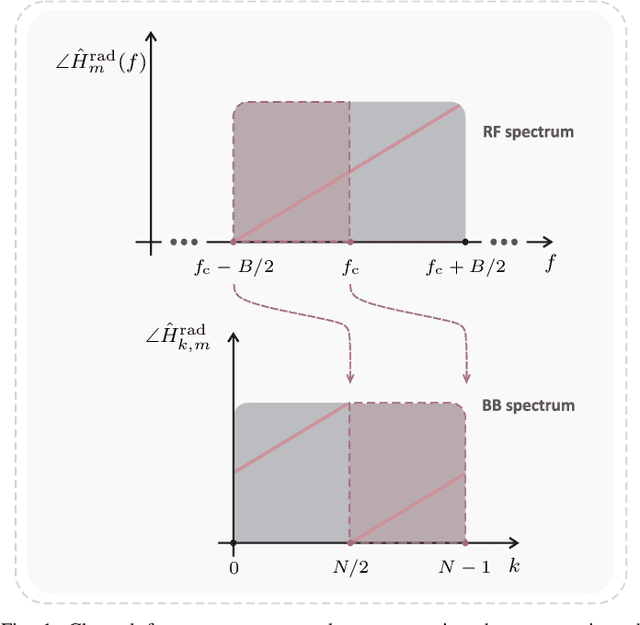
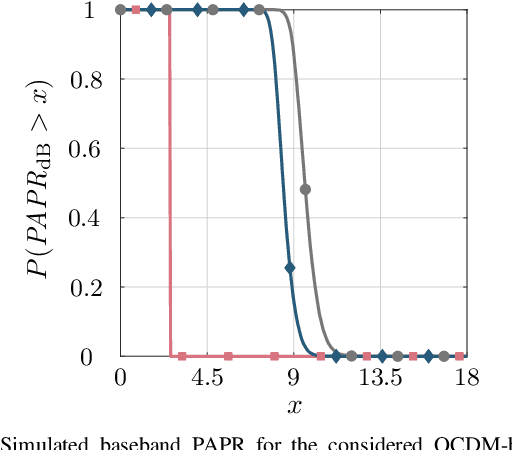
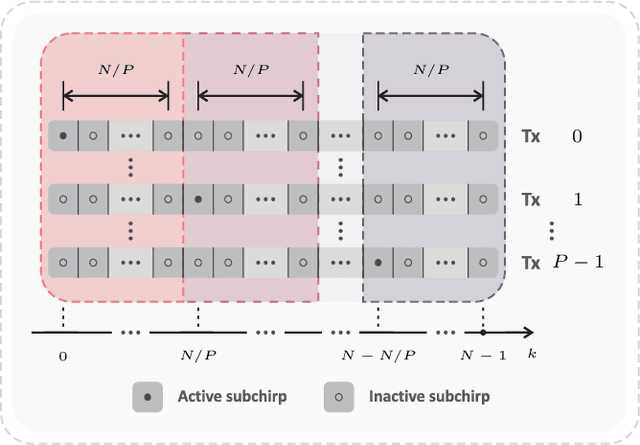
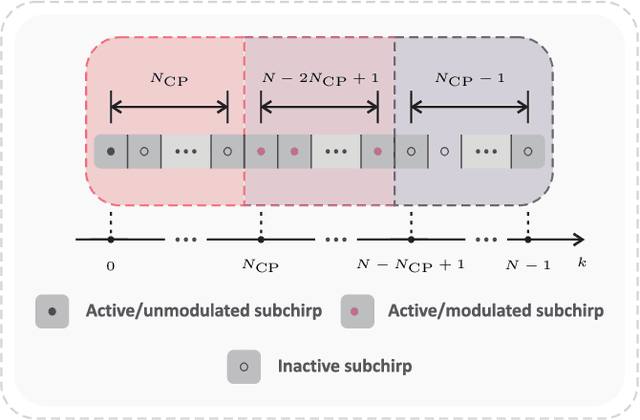
Abstract:In recent years, orthogonal chirp-division multiplexing (OCDM) has been increasingly considered as an alternative multicarrier scheme, e.g., to orthogonal frequency-division multiplexing, in digital communication applications. Among reasons for thar are its demonstrated superior performance resulting from its robustness to impairments such as frequency selectivity of channels and intersymbol interference. Furthermore, the so-called unbiased channel estimation in the discrete-Fresnel domain has also been investigated for both communication and sensing systems, however without considering the effects of frequency shifts. This article investigates the suitability of the aforementioned discrete-Fresnel domain channel estimation in OCDM-based radar systems as an alternative to the correlation-based processing previously adopted, e.g., in the radar-communication (RadCom) literature, which yields high sidelobe level depending on the symbols modulated onto the orthogonal subchirps. In this context, a mathematical formulation for the aforementioned channel estimation approach is introduced. Additionally, extensions to multi-user/multiple-input multiple-output and RadCom operations are proposed. Finally, the performance of the proposed schemes is analyzed, and the presented discussion is supported by simulation and measurement results. In summary, all proposed OCDM-based schemes yield comparable radar sensing performance to their orthogonal frequency-division multiplexing counterpart, while achieving improved peak-to-average power ratio and, in the RadCom case, communication performance.
Two-Dimensional Arbitrary Angle of Arrival in Radar Target Simulation
Feb 07, 2022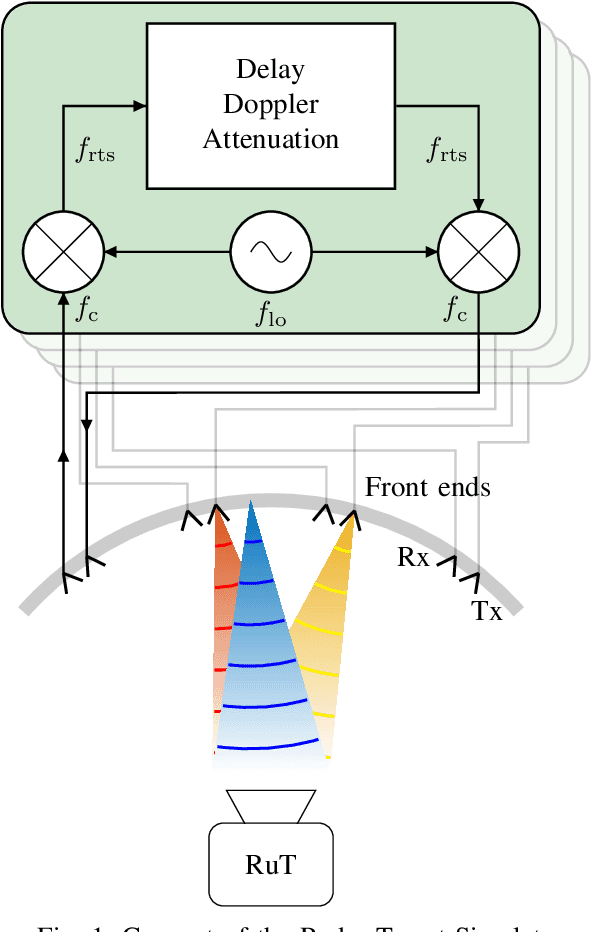
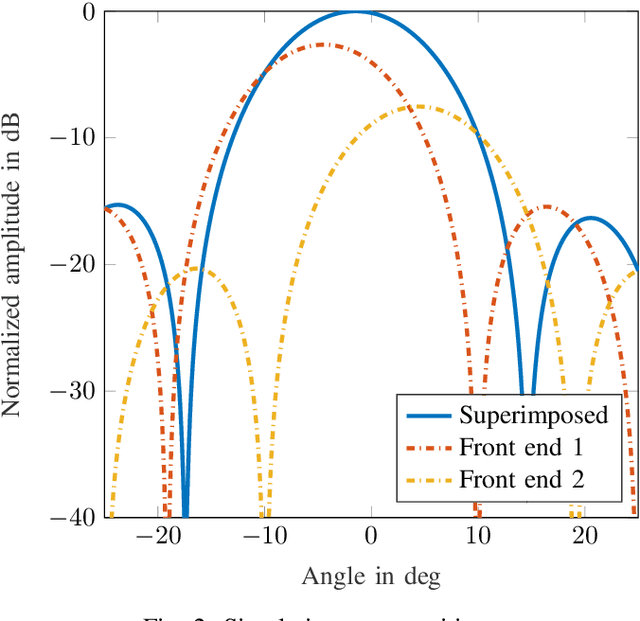
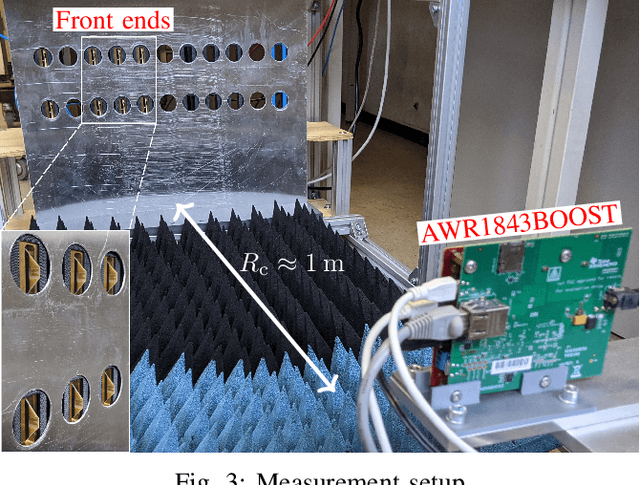
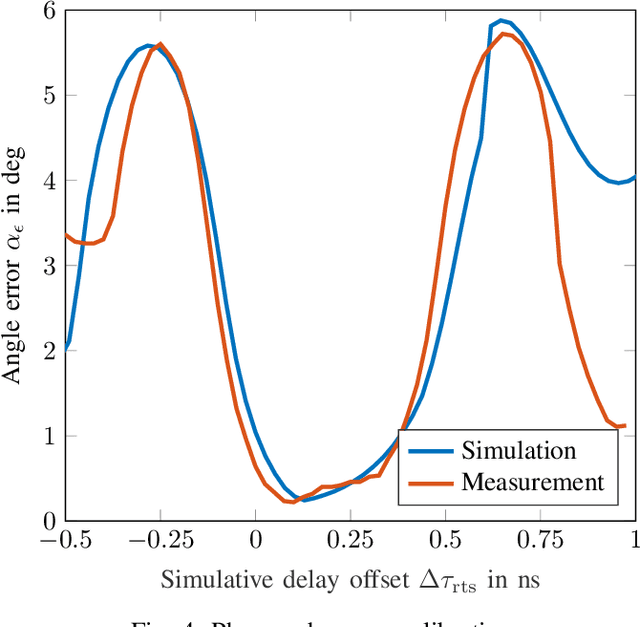
Abstract:Automotive radar sensors play a key role in the current development of advanced driver assistance systems (ADAS). Their ability to detect objects even under adverse weather conditions makes them indispensable for environment-sensing tasks in autonomous vehicles. Since an operational failure presents a potential risk to human life, thorough and practical validation testing must be performed, requiring an integrative test solution. Radar target simulators (RTS) are capable of performing over-the-air validation tests by generating virtual radar echoes that are perceived as targets by the radar under test (RuT). Since the authenticity and credibility of these targets is based on the accuracy with which they are created, their simulated position must be arbitrarily adjustable. In this work, an existing approach to synthesize virtual radar targets at an arbitrary angle of arrival (AoA) is extended to cover both, the azimuth and elevation domain. The concept is based on the superposition of the returning signals from four neighboring RTS channels. A theoretical model describing the basic principle and its constraints is developed. In addition, a measurement campaign is conducted to verify the practical functionality of the proposed approach.
 Add to Chrome
Add to Chrome Add to Firefox
Add to Firefox Add to Edge
Add to Edge